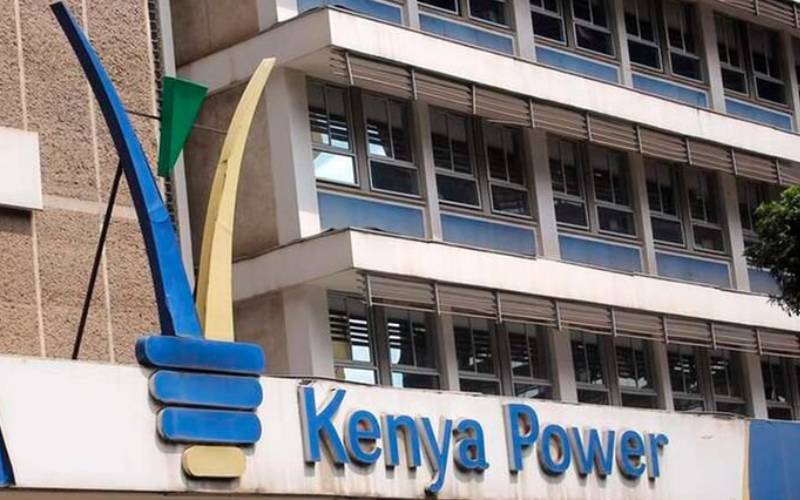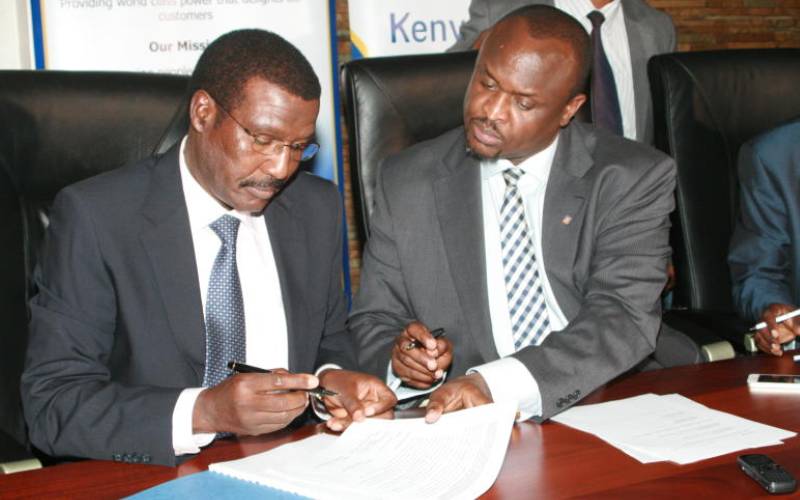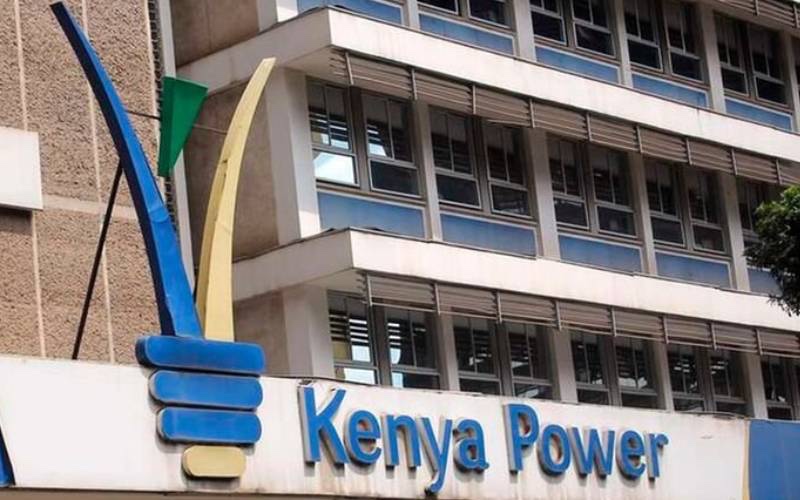Kenya Power has in the recent past found itself in the spotlight for the wrong reasons, again.
The State-owned power distributor’s board of directors has had run-ins with the Ethics and Anti Corruption Commission (EACC) and the National Assembly’s Energy Committee over claims of impropriety and usurping the management’s role.
EACC recently launched investigations into the board over alleged interference in the management’s work as well as the award of tenders. The investigation, coming hot on the heels of the unceremonious exit of immediate former chief executive Bernard Ngugi.
In a letter dated August 5, 2021, EACC Chief Executive Maj (Rtd) Twalib Mbarak wrote to the Kenya Power chairperson Vivienne Yeda and acting CEO Rosemary Oduor indicating the reason for the probe.
He said the removal of Ngugi was attributed to the conflict of interest.
“The commission is undertaking investigation on the reported complaints to inform further action against those found culpable,” stated the EACC boss.
The giant Kenya Electrical Trades and Allied Workers’ Union (Ketawu) has also weighed in on the issue and wants the board disbanded over claims that it is interfering with how the management runs the company.
The board, which was put in place a year ago, had been billed as a dream team of sorts, considering that the directors are leaders in their respective industries and have steered major brands to success.
The board was expected to steer the firm out of a financial rut that saw it post a loss of nearly Sh1 billion last year.
The board’s relationship with stakeholders, including employees, has been at a low ebb, mirroring the power distributor’s financial performance.
Left to constantly fight off allegations of corruption and a rift with the management, the directors are yet to show their mettle.
Some of the issues bedevilling the firm include expensive loans, high system losses, poor governance and political interference.
Sources at the power firm said the management had around 2015 spotted areas that are expected to give the company immediate returns.
It then went ahead to borrow heavily with a preference for commercial loans that are easily accessible compared to concessional loans that take longer to process.
Total borrowings grew to Sh122 billion in 2018, nearly three times the Sh43 billion the firm borrowed in 2013. The debt, however, went down to Sh109.96 billion in June last year.
While the money was partly used in infrastructure projects, including enhancing the utility firm’s network, the payback has not been as fast. This is even as interest rates continue to heavily pound the company’s earnings.
The firm’s finance costs have over the years grown, rising to Sh12.5 billion last year from Sh2.5 billion in 2013.
Of the Sh109.96 billion that Kenya Power owed lenders as of last year, about half of it are loans from commercial banks, characterised by high-interest rates, some as high as 11 and 12 per cent.

Other than the high-interest rates, the loans are also problematic, as they are fast-maturing.
The other half is made up of loans from multilateral lenders with relatively low interest rates, largely at between three and five per cent, while the repayments are over a long period of time, some stretching beyond 2030.
We reached out to Energy Principal Secretary Joseph Njoroge about whether there is any plan to address the company’s woes.
He said the ministry and the National Treasury are working on a plan to facilitate Kenya Power in restructuring its loans.
“Among things at play are the restructuring of its commercial loans, which are quite a burden to the company and to address the strenuous sources of high losses,” said Mr Njoroge. “Once this is done, there will be quite a relief for Kenya Power.”
In its annual report, the company reported system losses stood at 23.46 per cent in the period to June 2020, rising from 18.68 per cent to the current levels over a seven-year period. The acceptable international standard is 14 per cent.
This means out of every 100 units that the firm buys from power producers, it sells 76 units, with the balance being lost.
It categorises losses as technical and commercial, with technical losses attributed to the nature of the infrastructure, while commercial losses are due to theft by customers, including unscrupulous individuals who illegally tap the network, and even employees.
Kenya Power targets to reduce system losses to 19.9 per cent by 2025, meaning it has to cater for the 4.6 per cent, which translates into a loss of billions of shillings, leading to higher customer bills.
Analysts say while technical losses are difficult to tackle without heavy investments in the infrastructure, the firm can bring down its commercial losses by up to 99 per cent. Technical losses currently stand at about 12 per cent. The company is allowed by the Energy and Petroleum Regulatory Authority (Epra) to recover 19.9 per cent of the system losses from consumers. Epra increased the leeway last year from 14.9 per cent set in 2018.
Hindpal Jabal, a former Epra chairman, who also worked with Kenya Power, has in the past noted that “every one per cent increase in (electricity system) losses is equivalent to approximately Sh1 billion in revenue losses to Kenya Power.”
Ketawu Secretary-General Ernest Nadome noted that failure to connect new customers with meters after all the other infrastructure has been done leads to high instances of electricity theft.
He said the Rural Electrification and Renewable Energy Corporation (Rerec) has built infrastructure connecting a million new customers in rural areas to the national grid.
A shortage of meters, however, means they continue being in the dark as Kenya Power loses revenue from this ready market.
There are instances where some customers illegally complete the connections and start enjoying electricity without metres, costing Kenya Power billions of shillings in revenue loss.
Nadome added that political interference over the years has compounded Kenya Power’s problems, including fights between management and the board.
He noted that political appointees to the board in many instances want to influence management decisions, resulting in a decline in the company’s performance over time.
Nadome drew parallels between KenGen and Kenya Power, saying over the last 18 years, the former company, which is also State-owned, has had three managing directors, while Kenya Power has had 10.
“If you look at KenGen, there has been consistency such that the company has been able to come up with strategies and implement them,” he said.
“At Kenya Power, there have been10 managing directors and about eight boards over a similar period. There have been many strategies but they are never fully implemented. Political interference is a major problem at Kenya Power. The government has refused to let Kenya Power run independently.”

The trade union last week threatened to mobilise its members to go on strike in protest of how the current board has been conducting its business.
“We acknowledge that KPLC has had issues and that the government may have meant well when they brought in the current board – a reformist board – but they do not distinguish between the roles of management and the board,” said Nadome.
What then, should be done to get the company back on its feet? According to Nadome, the government needs to professionalise the board.
The current board was put in place on account of their strong credentials as captains of industry.
The trade unionists, however, feel despite the directors’ vast experience, they are still holding briefs for political players.
“Let the government move away from political appointees… it needs to change how it does. Perhaps it should even advertise for the positions of directors and have an independent body such as the Public Service Commission interview,” he said.
“Let us get in the board the right people who understand governance issues, people who can sit with management and look at strategy, refine it and leave management to implement it and concentrate on their oversight role. We need the right people, professionals to turn around the company.”
However, the Kenya Private Sector Alliance (Kepsa) is of a different view, noting that the current board is capable of turning around Kenya Power.
The lobby notes that Kenya Power’s problems stem from years of mismanagement and poor governance.
Turning that around, Kepsa said, needs toughness on the part of board members, with the lobby appearing to justify the board’s hands-on approach.
“We must bring this rot to a halt. Immediately. This means restoring order, efficiency, accountability, governance and a sense of purpose and mission to Kenya Power. This task requires a board that is clear about the strategic imperative of stopping and then decisively turning around Kenya Power’s decline,” said Kepsa in a statement last week.
“This is no easy undertaking, and any board embarking on it must expect ferocious opposition from those who stand to lose from such decisive action. But as a country, we cannot shirk this responsibility of restoring Kenya Power’s fortunes.”
The lobby said the board should prioritise restructuring the power distributor’s debt portfolio, reduction in energy losses and enhancing customer service and employee recognition.
There's no story that cannot be told. We cover the stories that others don't want to be told, we bring you all the news you need. If you have tips, exposes or any story you need to be told bluntly and all queries write to us [email protected] also find us on Telegram

